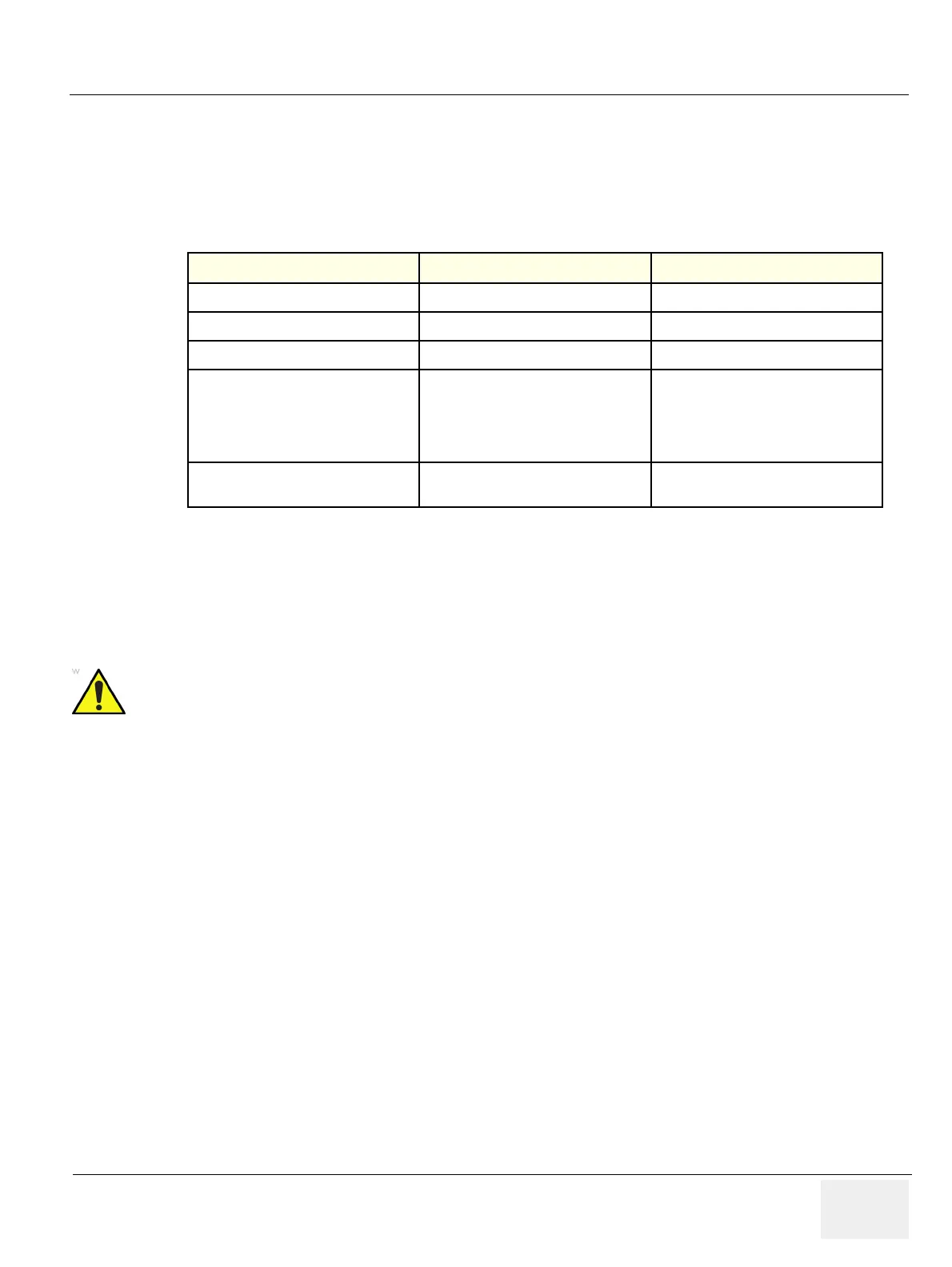GE LOGIQ F SERIES
DIRECTION 5446617-100, REVISION 10 BASIC SERVICE MANUAL
Section 2-2 - General Console Requirements 2 - 3
2-2-2 Electrical Requirements (cont’d)
2-2-2-1 LOGIQ F Series Power Requirements
The following power line parameters should be monitored for one week before installation. We
recommend that you use an analyzer Dranetz Model 606-3 or Dranetz Model 626:
2-2-2-2 Inrush Current
Inrush Current is not a factor to consider due to the inrush current limiting properties of the power
supplies.
2-2-2-3 Site Circuit Breaker
It is recommended that the branch circuit breaker for the machine be ready accessible.
2-2-2-4 Site Power Outlets
A desiccated AC power outlet must be within reach of the unit without extension cords. Other outlets
adequate for the external peripherals, medical and test equipment needed to support this unit must also
be present within 1 m (3.2 ft.) of the unit. Electrical installation must meet all current local, state, and
national electrical codes.
2-2-2-5 Unit Power Plug
If the unit arrives without the power plug, or with the wrong plug, you must contact your GE dealer or
the installation engineer must supply what is locally required.
2-2-2-6 Power Stability Requirements
Voltage drop-out
Max 10 ms.
Power Transients
(All applications)
Less than 25% of nominal peak voltage for less than 1 millisecond for any type of transient, including
line frequency, synchronous, asynchronous, or aperiodic transients.
Table 2-3 Electrical Specifications for LOGIQ F Series
PARAMETER AREA LIMITS
Voltage Range 100-240V~ 400VA
Power All applications MAX. 400 VA
Line Frequency All applications 50/60Hz
Power Transients All applications
Less than 25% of nominal peak voltage
for less than 1 millisecond for any type of
transient, including line frequency,
synchronous, asynchronous, or
aperiodic transients.
Decaying Oscillation All applications
Less than 15% of peak voltage for less
than 1 millisecond.
CAUTION
POWER OUTAGE MAY OCCURE.
The LOGIQ F Series requires a dedicated single branch circuit. To avoid circuit overload and
possible loss of critical care equipment, make sure you DO NOT have any other equipment
operating on the same circuit.

